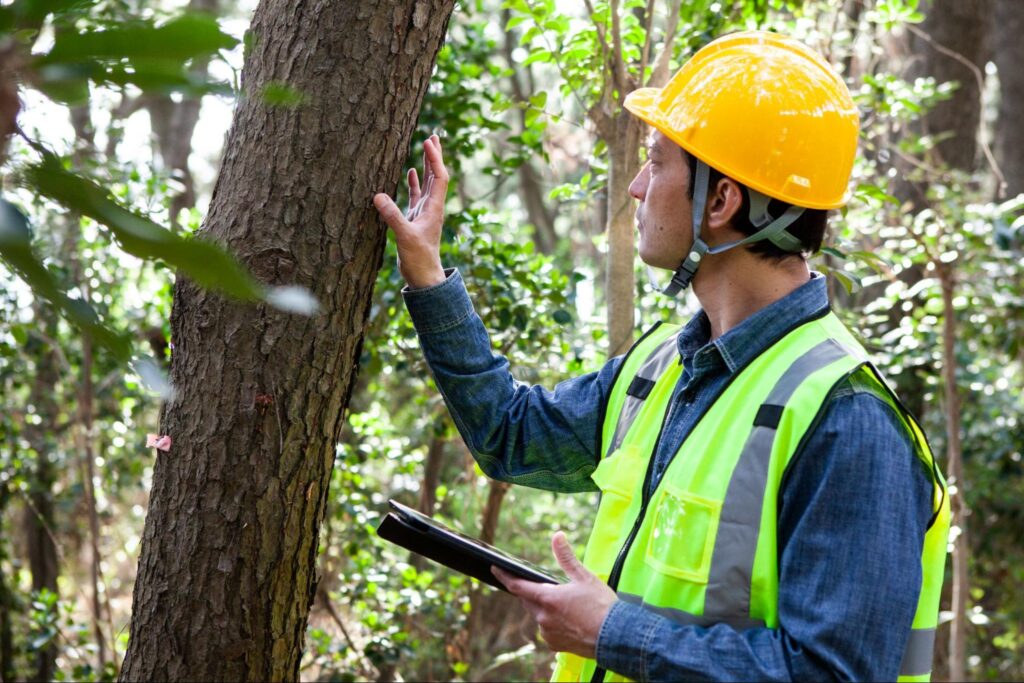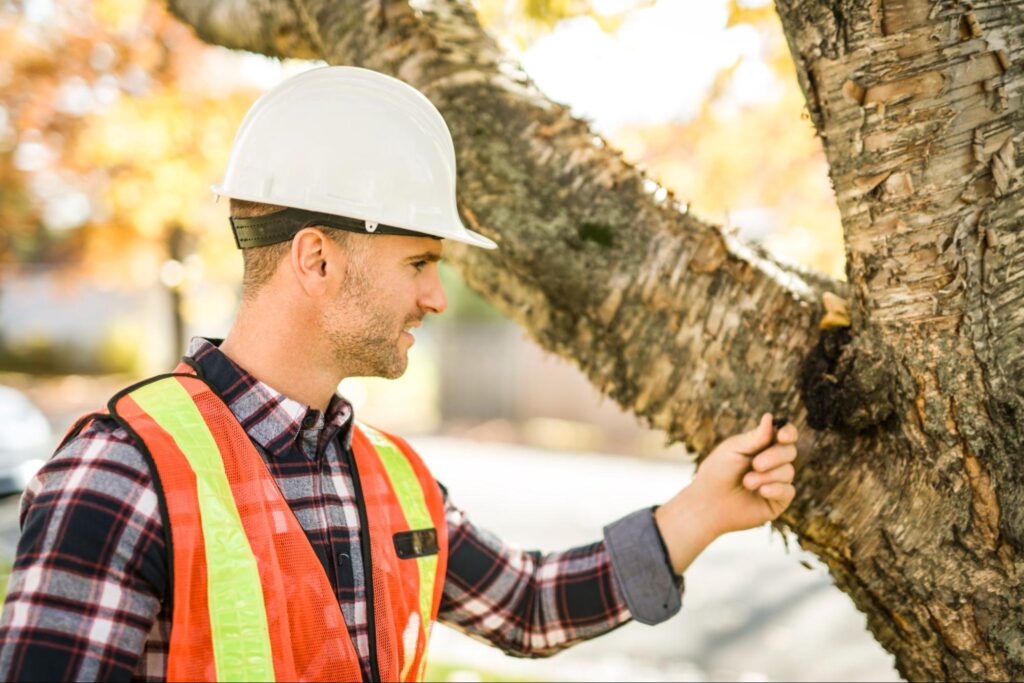Winter storms have a way of revealing a tree’s weaknesses. Branches snap, roots shift, and sometimes, entire trees come crashing down. But what about the dangers you can’t see? As spring approaches in Memphis, now is the time to get ahead of hidden tree hazards before they become a problem.
Our team at Red’s Tree Service has seen it all. Tees leaning dangerously close to homes, hollow trunks waiting for the next gust of wind to topple them, and limbs so brittle they could break with the slightest nudge – we have dealt with countless issues. Many of these challenges can be caught early with a simple inspection. A few minutes of checking your trees now can save you from costly damage and safety risks down the line. It’s helpful to know how to spot potential tree hazards before spring storms roll in.
Start from the Ground Up As You Look For Problems
Checking your trees from the ground up gives you a better picture of their overall health. Some problems aren’t obvious at first glance, but small warning signs at the base can reveal deeper issues.
Roots and Soil
A tree’s stability depends on its root system and soil conditions. If the foundation is weak, the whole tree is at risk.
- Exposed or damaged roots – If roots have been cut, compacted, or disturbed by sidewalks, driveways, or construction, the tree may not be as stable as it looks.
- Lifted or cracked soil – This can be a sign that the tree is shifting, especially if the ground appears raised on one side.
- Fungus or mushrooms – Growth around the base of a tree often means there’s internal decay, even if the tree still has leaves.
Trunk and Bark
The trunk tells a story of a tree’s health and structural integrity. Watch for:
- Deep cracks or splits – These can indicate serious internal damage.
- Missing bark or cankers – Sunken, discolored patches can be a sign of disease or decay.
- Sudden leaning – A tree that has recently started leaning could be unstable.
Branches and Canopy
Weak branches are among the biggest dangers, especially when storms hit. Look for:
- Hanging or broken limbs – These can fall unexpectedly, causing injury or property damage.
- Sparse leaves or discoloration – A sign that a branch is dying and may need removal.
Branches growing in a tight “V” shape – These are more likely to split under pressure.

Common Tree Hazards to Watch For
Not every tree with a crack or a few dead branches is dangerous, but some issues require immediate attention.
Signs Your Tree May Be a Safety Risk
1. Bark Damage and Deep Cracks
A tree’s bark is like its skin – when it’s severely damaged, the tree is vulnerable to disease and decay. Large cracks or peeling bark can indicate structural failure.
2. Hollow or Rotting Trunk
A tree that sounds hollow when tapped may have internal decay. While some hollow trees remain stable, significant rot can make them a fall risk.
3. Large Dead Branches
Deadwood is unpredictable. Even if the branch hasn’t fallen yet, it could break off with little warning. If you see large, leafless limbs, it’s time to have them removed.
4. Trees with a Sudden Lean
Some trees naturally grow at an angle, but if you notice a tree starting to lean more than before, it may have root damage or instability.
5. Overhanging Branches Near Structures or Power Lines
If branches extend over your roof, driveway, or power lines, they should be trimmed before they cause damage. Even healthy branches can become dangerous in high winds.
How to Reduce Risks With Proactive Tree Care
Spring storms are unpredictable, but regular tree maintenance from Red’s Tree Service can help prevent disasters. Here’s what you can do now:
- Inspect after storms – Heavy winds and ice can cause branches to weaken.
- Prune dead or weak branches – Removing them now prevents unexpected falls.
- Avoid over-mulching – Excess mulch can suffocate roots and lead to decay.
- Protect trees during construction – Heavy machinery and soil compaction can damage roots.
- Water during dry spells – Even established trees need deep watering in droughts.

Protect Your Property Before Spring Storms Hit
Some tree issues are easy to miss until they become a real problem. If you see cracks, leaning, or dead branches, it’s a good idea to have them checked before spring storms make things worse.
Red’s Tree Service offers expert tree inspections, pruning, and removal in Memphis. Our team can assess potential hazards and recommend the best course of action to keep your property safe.
Give us a call to schedule an inspection. A little prevention now can save a lot of trouble later.
This post first appeared on https://redstreeservice.com